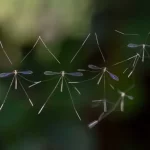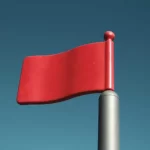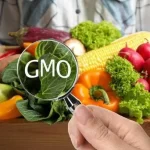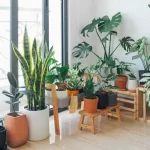Fake spider web decorations have a deadly impact on wildlife! Hopefully, once people realize this, they’ll never buy them again.
It’s that spooktacular time of the year when many are looking to deck out their homes with eerie Halloween decorations. Yet, before you go all out on turning your living space into a haunted mansion, it’s vital to reconsider one popular decor piece: fake spider webs. They might look cool and create the perfect Halloween vibe, but they come with a dark secret.
 A Threat to Our Feathered Friends
A Threat to Our Feathered Friends
While Halloween celebrations show no signs of slowing down, this season is turning into a real-life horror story for our wildlife.
Deadly Decor: Wildlife experts have repeatedly highlighted the dangers of fake spider webs. Birds, owing to their explorative nature, frequently get entangled in these webs.
Surprising Statistics: A market study in Australia indicated that out of five million people celebrating Halloween, a staggering 40% would be decorating their homes. This means a potential two million homes are using harmful decor like fake spider webs.
Unmasking the Uninformed: Social platforms are buzzing with surprise from individuals who never realized the harm these decorations could cause. This emphasizes the importance of spreading awareness.
Why We Should Be Concerned
The excitement of Halloween, unfortunately, comes with unforeseen consequences for our feathery friends. To fully grasp the magnitude of the issue, one must understand the intricate balance of nature and how even seemingly minor changes can topple it. The issue with fake spider webs becomes particularly concerning when you look at the wider picture.
One of the reasons why Halloween is particularly dangerous for birds in regions like Australia is due to its timing. It coincides with the avian breeding season. According to a study in the Journal of Avian Biology, young birds, especially fledglings, are more susceptible to environmental threats due to their inexperienced foraging habits and naive behavior. The fake webs pose as death traps for these innocent creatures.
Ecosystem Implications
It’s not just about the individual bird that gets trapped – it’s about the ripple effect it has on the ecosystem. Birds play a crucial role in maintaining ecological balance. They control pests, pollinate flowers, and disperse seeds. Disruptions in their population, especially during breeding seasons, can have longer-term implications.
A decrease in the number of birds due to man-made hazards can result in an increase in pests, impacting vegetation, agriculture, and eventually the human population. Moreover, parents that get trapped leave behind nests with hungry chicks, leading to higher mortality rates among the young.
Beyond the Birds
Birds aren’t the only victims. Many insects, crucial to our ecosystem, are also at risk. Bees, butterflies, and other pollinators get caught in these webs. Given that 75% of the world’s food crops depend at least in part on pollination, as per the United Nations, protecting these insects is essential for our own survival.
Dangers at Home
The threat isn’t just outdoors. For many pet owners, the safety threats of Halloween decorations extend indoors. Common decorative items, like fake spider webs, can pose significant risks when ingested. Pets, especially cats and dogs, are naturally curious and might mistake these decorations for toys or food. Ingesting non-food items can lead to digestive blockages, which might require emergency veterinary attention.
Other Hidden Dangers of Halloween Decorations
While fake cobwebs may pose a significant danger to birds and insects, they are not the only Halloween decorations that could potentially harm wildlife. It’s essential to be aware of other hidden dangers to ensure a safe and enjoyable holiday for both humans and animals. Here are some other Halloween decorations to watch out for:
Candles and Jack-o’-Lanterns
Candles and Jack-o’-lanterns create a spooky ambiance, but they can be hazardous to pets and wildlife. Curious animals, such as cats or squirrels, may investigate the flickering flames and accidentally knock over the candle, causing a fire. To prevent accidents, consider using LED candles or flameless alternatives.
Glow Sticks and Jewelry
Glow sticks and jewelry are popular accessories for Halloween costumes, but the chemicals inside them can be toxic to animals if ingested. Dogs, in particular, are attracted to the bright, glowing colors, and may chew or bite into them. Make sure to keep glow sticks and jewelry out of reach of pets and dispose of them properly after use.
Pumpkin Decorations
Although pumpkin decorations are a Halloween staple, they can also pose risks to wildlife. Small animals, such as raccoons and squirrels, may be attracted to pumpkins and attempt to eat them. While pumpkin flesh is generally safe for animals, it’s important to remove any candles, toxic paints, or decorations from the pumpkins to prevent ingestion of harmful substances.
Fake Blood and Makeup
Fake blood and makeup can add a gruesome touch to Halloween costumes, but some of the ingredients used in these products can be harmful to both humans and animals. Toxic substances like lead, nickel, and formaldehyde may be present in certain makeup products, potentially causing skin irritations or other health issues. It’s important to choose non-toxic, skin-safe products and do a patch test before applying them to yourself or your children.
Tips for an Animal-Friendly Halloween
Now that you’re aware of the hidden dangers that Halloween decorations can pose to wildlife, here are some tips to ensure an animal-friendly holiday:
1. Opt for Natural Decorations: Consider using natural decorations, such as pumpkins, gourds, or fall leaves, instead of artificial ones. These decorations are less likely to harm animals if accidentally ingested.
2. Keep Decorations Secure: Secure your decorations properly to prevent them from falling or being blown away. This will reduce the risk of animals getting entangled or injured by loose decorations.
3. Use Animal-Safe Insect Repellents: If you’re using insect repellents, make sure they are safe for pets and wildlife. Some repellents contain chemicals that can be toxic to animals. Look for natural alternatives or consult your veterinarian for pet-safe options.
4. Avoid Loud Noises: Loud noises from fireworks or Halloween parties can be distressing to animals, particularly pets. Keep your pets indoors and create a safe and quiet space for them during Halloween celebrations.
5. Keep Candy and Treats Secure: Candy and treats, especially chocolate, can be toxic to animals if ingested. Keep them out of reach of pets to prevent accidental ingestion and potential health issues.
6. Educate Neighbors and Friends: Share your knowledge about the potential dangers of certain decorations and practices. Encourage them to also adopt animal-friendly measures during Halloween.
7. Choose Pet-Safe Costumes: If you’re dressing up your pets, ensure their costumes don’t have loose or small parts they can chew off and swallow. Also, make sure the costume is comfortable and doesn’t restrict movement.
8. Avoid Glow Sticks: While they might look fun, if broken and ingested, glow sticks can be harmful. Pets might be attracted to their luminescence, leading them to chew on them.
9. Minimize Doorbell Disturbances: Frequent ringing of the doorbell or knocking can upset pets. Consider leaving a bowl of candy outside with a note, or using a sign to reduce the frequency of ringing.
10. Monitor Outdoor Activities: If you do have outdoor decorations or activities planned, frequently check the area to ensure no wildlife has become entangled or distressed.
A Safe and Enjoyable Halloween for All
As Halloween continues to gain popularity in Australia, it’s crucial to be mindful of the impact our decorations can have on wildlife. Fake cobwebs, as well as other common decorations like candles, glow sticks, and makeup, can pose hidden dangers to birds, insects, and animals. By taking precautions, such as securing decorations, using animal-safe alternatives, and properly disposing of decorations, we can ensure a safe and enjoyable Halloween for both humans and our furry and feathered friends. Let’s celebrate responsibly and protect the wildlife that shares our environment.












